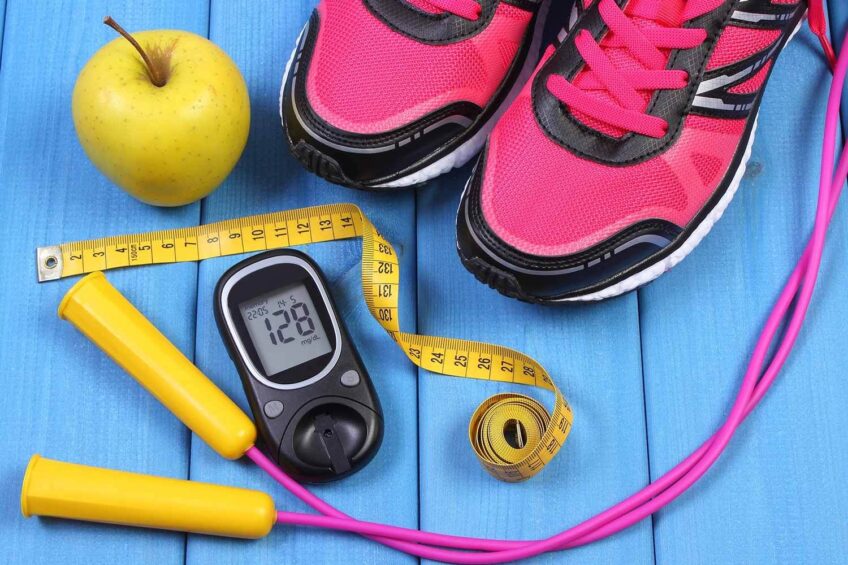Is it Safe to Workout During a Fasted State?
With intermittent fasting so popular, what does the data say about working out in a fasted state? Is it safe for all, or are there things to consider?

It doesn't happen often, but I love the feeling of discovering a new health or wellness trend, only to realize that it's been part of my routine for years.
You see, since I was a teenager, I've struggled to get out of bed in the mornings, always hitting the snooze button the maximum amount of times, which means that mornings were generally rushed back then.
My priorities have shifted these days massively, thanks to books such as The 5 Second Rule by Mel Robbins. Breakfast still doesn't happen until about 11 am because my mornings are for me.
So, you can imagine that when I first learned about intermittent fasting, I was pretty excited. Intermittent fasting is a pattern that cycles between periods of fasting and periods of eating, and one of the most common methods is to fast for 16 hours a day and only eat during the remaining 8 hours.
My natural rhythm means I stick to that pretty closely, eating breakfast or brunch close to noon and eating my last meal (dinner) around 7 pm.
But that got me thinking: if I'm fasting intermittently, what does that mean for my exercise routine? Should I be doing things differently? And more importantly, is it safe to exercise on an empty stomach? My gut feeling was that since I'd been doing it for years, it was probably fine, but maybe the research could fill in some of the gaps and help me elevate the efficacy of my training.
Before we get into the science behind working out in a fasted state, we must understand what we're talking about here.
What are the Different Types of Fasting?
The idea behind fasting is that you reduce your calorie intake, which leads to weight loss as long as you can control the number of calories you consume when you're in the eating period.
As I mentioned before, I seem to do the 16:8 method (also called the Leangains protocol) of fasting naturally. It's the method that works for most people as it's easy to understand and fits into most people's routines, making it easy to stick with and, therefore, sustainable in the long term.
The two other methods are:
- Eat-Stop-Eat, a 24-hour fast once or twice a week
- 5:2, where you usually eat five days a week but restrict your calorie intake to 500 calories on two days of the week
What is a "Fasted" Workout?
Your body is always in one of two states:
- Fed, where you've eaten recently, and your body begins to digest what you've eaten. If you choose to exercise after eating, your body will use the calories that you've ingested as energy.
- Fasted, when you haven't eaten in a while, meaning that if you choose to exercise, your body will use its stores of energy to fuel your workout.
A fasted-state workout is, therefore, one where you exercise without eating for a few hours before, and your body taps into its energy stores to power the workout.
Is it Safe?
Working out in a fasted state is considered safe for most people. There are some guidelines to follow to ensure that you get the most from your workouts because it doesn't come down to a one-off session. If you want to succeed in the long run, you need to be working out safely and effectively, and you can do this with keeping 3 relatively simple steps in mind:
1. Keeping Hydrated
Intermittent fasting doesn't apply to liquids – if you're fasting, you still need to be drinking. Water is the obvious choice, but other options that are high in electrolytes and low in calories could also be a good option. There are countless electrolyte water options to help. Coffee and tea are options, without sugar or other additives, of course.
2. Timing Your Meals
If you're doing 16:8 daily intermittent fasting, you can set up your routine to ensure that you're eating a meal a few hours before a high-intensity workout so that your body has the fuel it needs to get through the workout.
3. Choosing Your Workouts Carefully
If you're going to be in a fasted state early in the morning, rather go for a walk, a low-intensity run, or do some yoga. It's best to save a HIIT session for the evening after you've eaten.
Who Should Avoid Fasted-State Exercise?
There is research that looks at the link between fasting and the chemical reactions that are going on in your muscles as well as your metabolism. This has important implications for people with type II diabetes or metabolic syndrome.
Because fasted-state exercise affects insulin sensitivity and blood sugar level control, if you have Type II diabetes or metabolic syndrome, you should consult your doctor before trying it.

Type II diabetes, where the body either doesn't produce enough insulin or is insulin-resistant, means that the body can't process blood sugar properly. Metabolic syndrome, by contrast, is not a disease itself but rather a cluster of risk factors that increase your chance of heart disease, stroke, and diabetes. The conditions include high blood sugar, high blood pressure, cholesterol, and body-fat around the waist.
In general, even if you don't have diabetes or metabolic syndrome, you need to listen to your body. If you experience weakness or dizziness, it's most likely that you're dehydrated or your blood sugar levels have dropped. Intermittent fasting with exercise works well for many people, but others might not feel comfortable. If you have any concerns, please check with your healthcare provider before beginning a new exercise program in a fasted state.
If you're generally healthy, you can also consider getting a basic metabolic panel blood test without a doctor through sites such as Request a Test or MyMedLab. It's an extremely inexpensive option.
Is it Even Beneficial to Work Out During a Fasted State?
While it may be safe for most people to exercise while fasting, it's also important to note whether it can produce better results. And the research findings are surprising as they suggest that it doesn't actually offer any long-term benefits. You might intuitively think that it's better for your body to be using your own energy stores, but the facts don't back up this kind of thinking.
For Weight Loss
Weight loss comes down to total calorie intake. In simple terms, if you're eating too many calories and not burning the excess, you're going to put on weight, and no amount of fasted training can change that.
One study showed that fed compared to fasted-state HIT training didn't alter the effectiveness of a workout, while another showed that there was no difference between fed and fasted training for fat loss.
For Performance
Studies seem to agree that there will be no difference in your performance if you're doing cardio for under an hour. For sessions lasting longer than an hour, exercising in a fed-state improved performance.
For Muscle Loss
There is often a concern that if you exercise in a fasted state, your body will break down muscle (as well as fat) to fuel your workout because it's run out of glycogen. But, if you look at the research, you'll quickly see that you're going to have to work pretty hard to deplete your glycogen stores to this extent.
My Thoughts?
I often work out in a fasted state three or four mornings a week. I lace up my shoes and rush out the door to meet my running partner. So, while it's not done consciously, I'm definitely not having breakfast before heading out. But, on the other hand, I'm not running a marathon at 6:30 am on a Tuesday morning. In reality, it's a 30 to 45-minute medium-intensity jog, which can't be compared to something like a HIIT workout.
I tend to save any HIIT sessions for late afternoon, around 3 or 4 hours after lunch, so my body has plenty of fuel to work with, but I won't end up feeling nauseous or getting a stitch.
My thinking is that you should do what works for you.
While working out during a fasted state is safe for most people (if you don't have blood sugar or metabolic issues), it doesn't necessarily feel good for everyone. And, since the research has shown that fasted-state workouts don't offer any significant benefits, you can design your workout schedule to fit your lifestyle and what makes you feel good.
Tony Lee, MS, RD
Tony Lee, RD, MS, is a highly qualified and accomplished Registered Dietitian with a Master’s Degree in Nutrition Sciences. Tony brings over two decades of experience in dietetics, specializing in sports nutrition. Interests include studying all aspects of wellness, fitness, genetics, and peak health performance.










